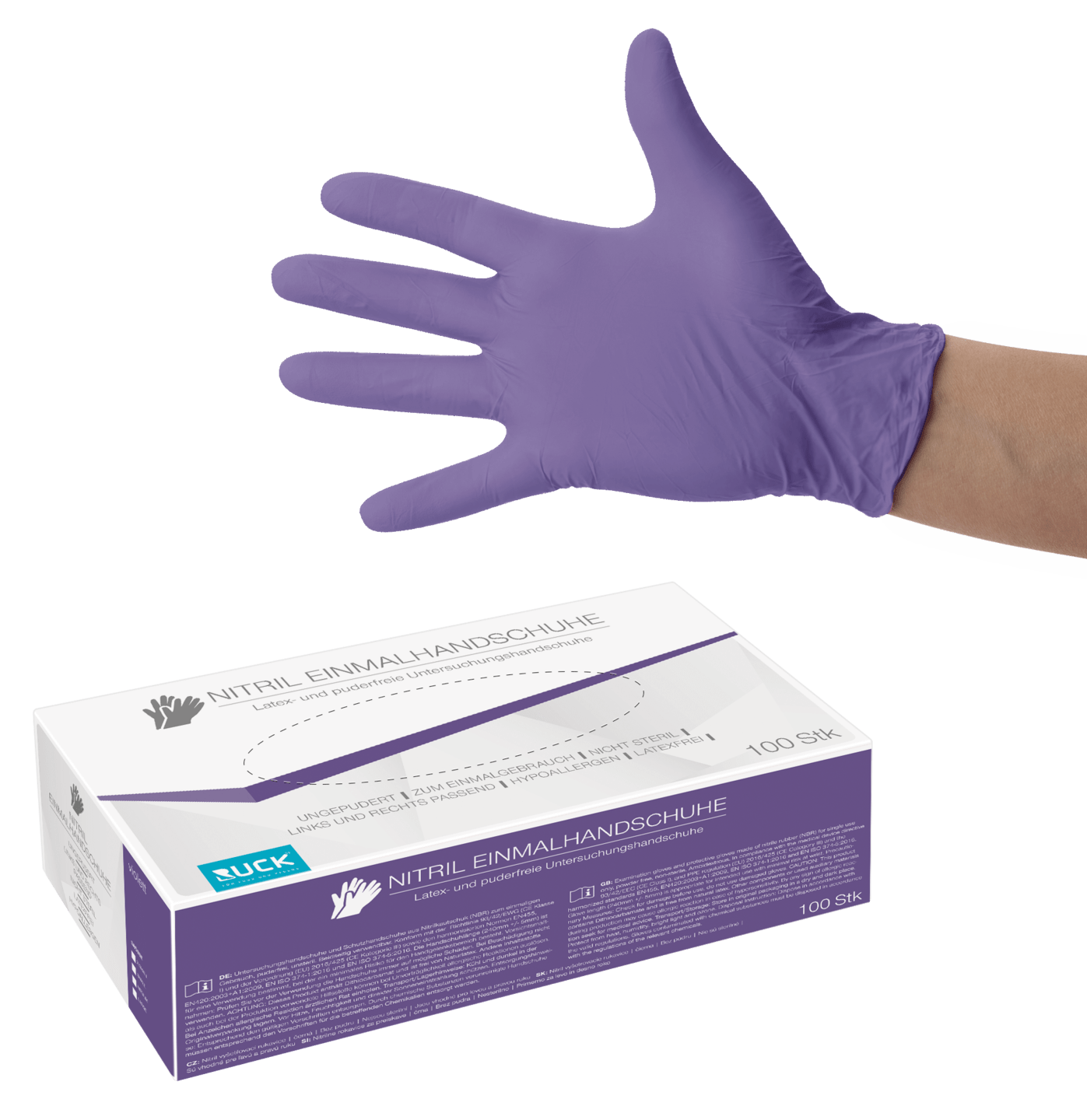Disposable gloves are essential in protecting yourself from infection and at the same time a display to your patient of hygiene awareness. With what you choose to protect your hands should be safe, reliable and well-fitting. Having guaranteed RUCK premium quality - due to the high priority given to your personal protection, our gloves are manufactured to be suitable for medical use in accordance with the current EU and UK Medical Device Regulations, in accordance with DIN EN 455 and a large number of the gloves are also tested in accordance with DIN EN 374 (protection against hazardous chemicals and microorganisms). Furthermore, the RUCK premium quality guarantees good skin compatibility and comfortable wearing properties. As different materials are available to you when choosing the right disposable glove, you should correctly check which material is the right one for your purposes.
Nitrile gloves - The hypoallergenic all-rounders
Nitrile gloves have proven themselves for years as an alternative to latex gloves to avoid the allergic reactions caused by latex. Nitrile is a synthetic rubber NBR (Nitrile Butadiene Rubber) and is very resistant to oils and certain chemicals and with regard to these properties in some areas of application in contrast to latex the perfect choice.
Advantages:
- High elasticity
- Very good sensory perception
- High level of comfort
- Hypoallergenic properties
- High resistance to tears and punctures
Disadvantages:
- Not compatible with acetone
Latex gloves - The elastic ones
Latex gloves are products made from rubber, a natural raw material. Latex is a liquid material and requires additives to achieve perfect strength. In their finished state, latex gloves are extremely elastic, comfortable to wear and provide extremely good sensory perception.
Advantages:
- Extremely elastic material
- Very good fit
- Particularly good sensory perception
Disadvantages:
- Potential for allergic reactions (except item no. 29168)
- Permeable to mineral oil and solvents
Vinyl gloves - The economical ones
Vinyl gloves are the cost-effective solution for daily use and are suitable for those who are allergic to latex.
Advantages:
- Extremely cost-effective
- Low potential for allergic reactions
- High level of comfort
Disadvantages:
- Less resistant to tears and punctures
- Lower elasticity
- Restricted fit
- Does not provide oil resistance
When should disposable gloves be worn?
Disposable gloves should be worn to provide protection against infection:
- when coming into contact with blood or wound secretions
- when treating patients with skin diseases
- when using products such as salicylic acid or silver nitrate
- when coming into contact with surface or instrument disinfectants

The correct doffing of protective gloves
Equally important to checking which material is the most appropriate, is the accurate doffing of your gloves, to make sure you remain protected. The following sequence should be observed:

Step 1
Grab and lift the outside of the palm of the first glove. Do not touch the skin with the outer surface of the glove

Step 2
Without allowing the outer surface of the glove to touch the skin, pull the first glove off completely, roll it up and hold it in the remaining gloved hand.

Step 3
With the bare thumb of the other hand, reach under the remaining glove and begin to pull it off without touching the outer surface of the glove.

Step 4
Peel the glove over the other first glove so that it becomes contained within, and dispose of both fully.


































































